
A ceramic is any of the various hard, brittle, heat-resistant, and corrosion-resistant materials made by shaping and then firing an inorganic, nonmetallic material, such as clay, at a high temperature. Common examples are earthenware, porcelain, and brick.

Stephanie Louise Kwolek was a Polish-American chemist who is known for inventing Kevlar. Her career at the DuPont company spanned more than 40 years. She discovered the first of a family of synthetic fibers of exceptional strength and stiffness: poly-paraphenylene terephthalamide.
In 1957, the research organization of the Chemicals Department of E. I. du Pont de Nemours and Company was renamed Central Research Department, beginning the history of the premier scientific organization within DuPont and one of the foremost industrial laboratories devoted to basic science. Located primarily at the DuPont Experimental Station and Chestnut Run, in Wilmington, Delaware, it expanded to include laboratories in Geneva, Switzerland, Seoul, South Korea, Shanghai, China, and India (Hyderabad). In January, 2016 a major layoff marked the end of the organization.
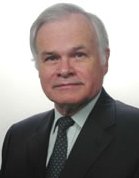
Prof. Roger R. Naslain is French chemical and physical scientist. He has been a professor at the University of Bordeaux 1 since 1969.
Lisa C. Klein is an American engineer. She is a distinguished professor of engineering at Rutgers University in New Jersey. In 1977, she became the first female faculty member in the Rutgers School of Engineering. She is the director of the graduate program in the Department of Materials Science and Engineering.
As an important part of the national sustainable development strategy, the development of advanced materials is advancing the competitive nature and state of the art for Chinese industry. The State has put advanced materials high on its development agenda for the next decade and listed it among the key high-tech industry sectors that would be given priority for development by the State Council. At present, the pace of building China's advanced materials industry is accelerating. Advanced materials have been key fields in China's national R&D system.

Amit Goyal is a SUNY Distinguished Professor and a SUNY Empire Innovation Professor at SUNY-Buffalo. He leads the Laboratory for Heteroepitaxial Growth of Functional Materials & Devices. He is also Director of the New York State Center of Excellence in Plastics Recycling Research & Innovation, an externally funded center with initial funding of $4.5M for three years at SUNY-Buffalo. He is the founding director of the multidisciplinary and transdisciplinary RENEW Institute at SUNY-Buffalo in Buffalo, New York and served as director from 2015-2021. RENEW is an internally funded research institute at SUNY-Buffalo. For his contributions to UB, in 2019, he was awarded the University at Buffalo or SUNY-Buffalo President's Medal, which recognizes “outstanding scholarly or artistic achievements, humanitarian acts, contributions of time or treasure, exemplary leadership or any other major contribution to the development of the University at Buffalo and the quality of life in the UB community.” This is one of the highest recognitions given at the university.

The IRI Medal, established by the Industrial Research Institute (IRI) in 1946, recognizes and honors leaders of technology for their outstanding accomplishments in technological innovation which contribute broadly to the development of industry and to the benefit of society. One side of the medal depicts a scientist peering into a microscope as a symbol of the never-ending quest for innovation; a pegasus running in the background as a symbol of imagination; and clouds issuing from a retort revealing the practical results of humanity's ability to harness natural forces to meet its needs. The reverse side of the medal is an adaptation of the official seal of the Institute. This award is traditionally presented each spring at the IRI Annual Meeting alongside the IRI Achievement Award.
Frederick Nye Tebbe was a chemist known for his work on organometallic chemistry. Tebbe was born in Oakland, California on March 20, 1935. His father, Charles L. Tebbe, worked for the United States Forest Service so Fred’s early education took place in Montana, Oregon, Maryland and Pennsylvania. He married Margaret Manzer in 1960, and they had a son and a daughter. He died of pancreatic cancer at his home in Delaware on September 28, 1995.

Otto Lin was born Chui Chau Lin (林垂宙) in Shantou, Guangdong, China, in 1938. He came to Hong Kong as a refugee and went to Taiwan in 1953 where education at K-12 level was free. He attended National Taiwan University and received a BS in chemical engineering in 1960. After serving in ROTC, he was admitted to University of Illinois at Champaign-Urbana for post-graduate studies. Later he transferred to Columbia University in the City of New York, received the Ph.D. degree in 1967 in chemistry. His doctoral research was on the relationship of macromolecular conformation and hydrodynamic properties of DNA.
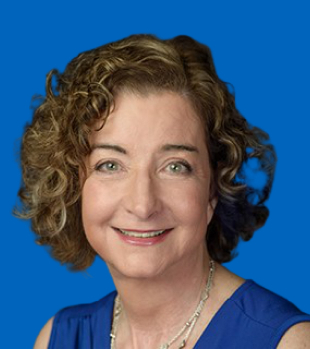
Laura H. Greene is the Marie Krafft Professor of Physics at Florida State University and chief scientist at the National High Magnetic Field Laboratory. She was previously a professor of physics at the University of Illinois at Urbana-Champaign. In September 2021, she was appointed to the President's Council of Advisors on Science and Technology (PCAST).

Juan J. de Pablo is a chemical engineer, Liew Family professor in the Pritzker School of Molecular Engineering at the University of Chicago and senior scientist at Argonne National Laboratory. In 2018, he was appointed Vice President for National Laboratories at the University of Chicago, a title which later expanded to include Science Strategy, Innovation and Global Initiatives in 2020. As of 2021, he is Executive Vice President for Science, Innovation, National Laboratories and Global Initiatives at the University of Chicago. He is known for his research on the thermophysical properties of soft materials. He is currently the co-director of the NIST supported Center for Hierarchical Materials Design (CHIMaD). and former director of the UW-Madison Materials Research Science and Engineering Center (MRSEC). He was elected a member of the National Academy of Sciences in 2022.

Mas Subramanian,, is a solid-state materials scientist at Oregon State University in Corvallis, Oregon. He is a University Distinguished Professor and the Milton Harris Chair of Materials Science in the university's Department of Chemistry. His work in solid-state chemistry on structure-property relationships of inorganic compounds has led to several breakthrough discoveries of novel functional materials, many of which have found usage in various applications. Subramanian has authored 400 research publications and holds 60 patents. His publications have received more than 30,000 citations.
Gurpreet Singh is a professor of Mechanical and Nuclear Engineering at [Kansas State University]. He is endowed by the Harold O. and Jane C. Massey Neff Professorship in Mechanical Engineering. Singh was born in Ludhiana, India; he currently resides in the United States.
The Percy L. Julian Award was first given in 1975 by the National Organization for the Professional Advancement of Black Chemists and Chemical Engineers (NOBCChE). The award is given every one to two years. It honors black scientists who have made significant contributions to the areas of pure or applied research in science or engineering.

LaShanda Teresa James Korley is a Distinguished Professor of Materials Science at the University of Delaware and an expert in soft matter, polymers, and nature-inspired materials. On a larger scale, Korley is also working on developing strategies and technologies to prevent plastic waste in landfills and oceans by upcycling plastic waste to more valuable products. She leads such efforts through the Center for Plastics Innovation, the Center for Research in Soft Matter and Polymers, and also the Center for Hybrid, Active, and Responsive Materials (CHARM). Korley was awarded the 2019 National Organization for the Professional Advancement of Black Chemists and Chemical Engineers Lloyd N. Ferguson Young Scientist Award for Excellence in Research.
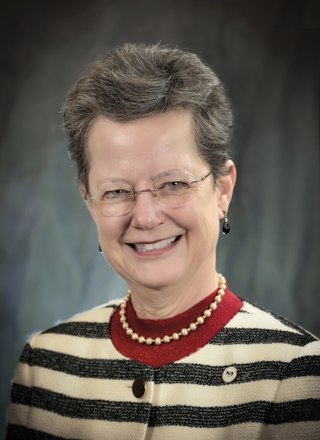
Julia Mae Phillips is an American physicist. She began her career in materials research on thin films on semiconductors and has transitioned into leadership roles in science policy. She currently serves on the National Science Board.
Elizabeth Jane Opila is an American materials scientist who is the Rolls-Royce Commonwealth Professor of Engineering at the University of Virginia. Her research considers the development of materials for extreme environments. She was elected Fellow of the Electrochemical Society in 2013 and the American Ceramic Society in 2014.

Sheldon M. Wiederhorn was an American materials scientist affiliated with the National Institute of Standards and Technology.
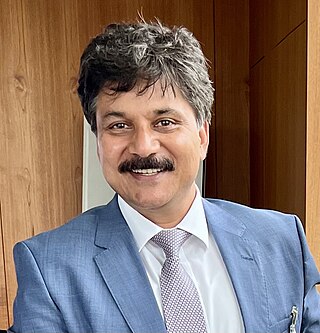
Sanjay Mathur is an inorganic chemist, current president of the American Ceramic Society. acting director of the Institute of Inorganic Chemistry at the University of Cologne, honorary co-director of the Institute of Renewable Energy Sources at the Xi'an Jiaotong University, a World Class University Professor at the Chonbuk University. He is an adjunct professor at the Indian Institutes of Technology in Chennai and has held visiting professorships at the Central South University, the Tokyo University of Agriculture and Technology, the National Institute of Science Education and Research. He was awarded the Honorary Doctorate of the Vilnius University in 2016. He is an elected fellow of the American Ceramic Society, the American Society for Metals, the European Science Academy, the Indian National Science Academy and has been awarded with the fellowships of the Alexander von Humboldt Foundation. Mathur is known for his library of single source precursors for the production of nanostructured ceramic materials with tailormade properties, attaining a h-index of 70 and over 18000 citations.

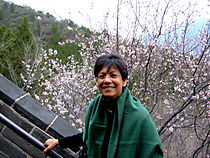 Uma Chowdhry in 2008
Uma Chowdhry in 2008











